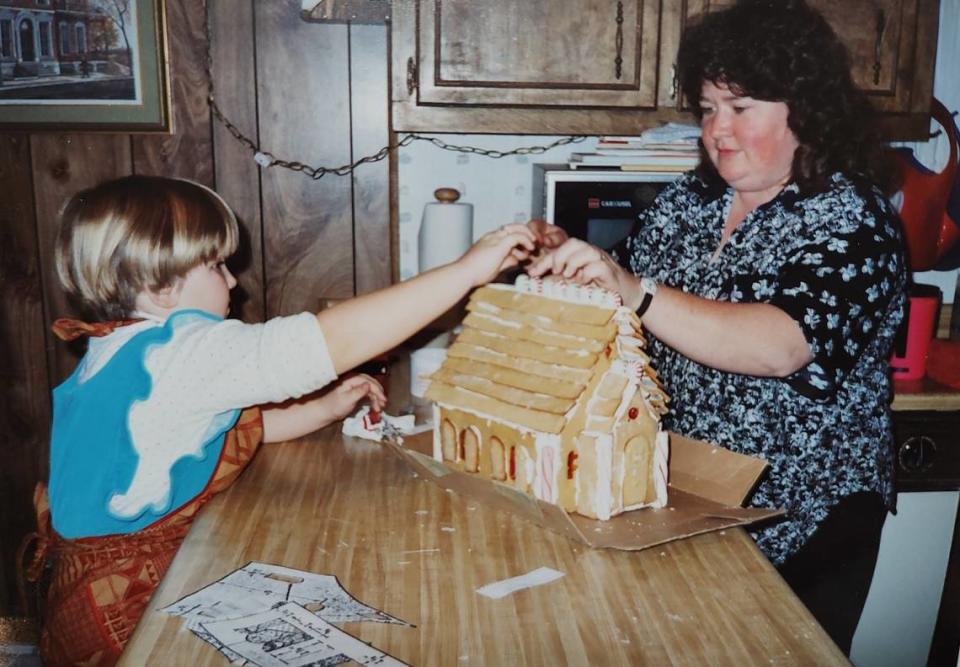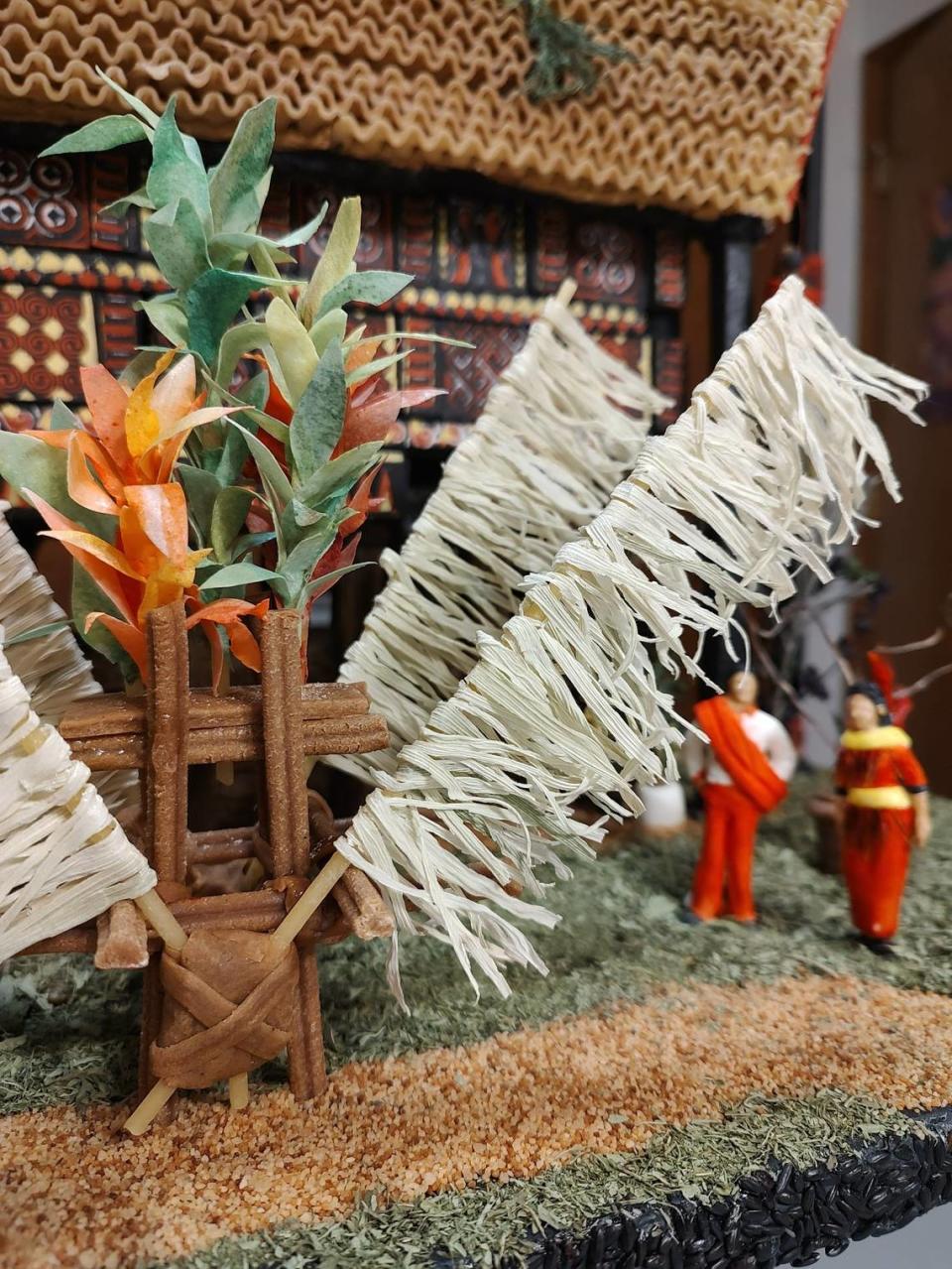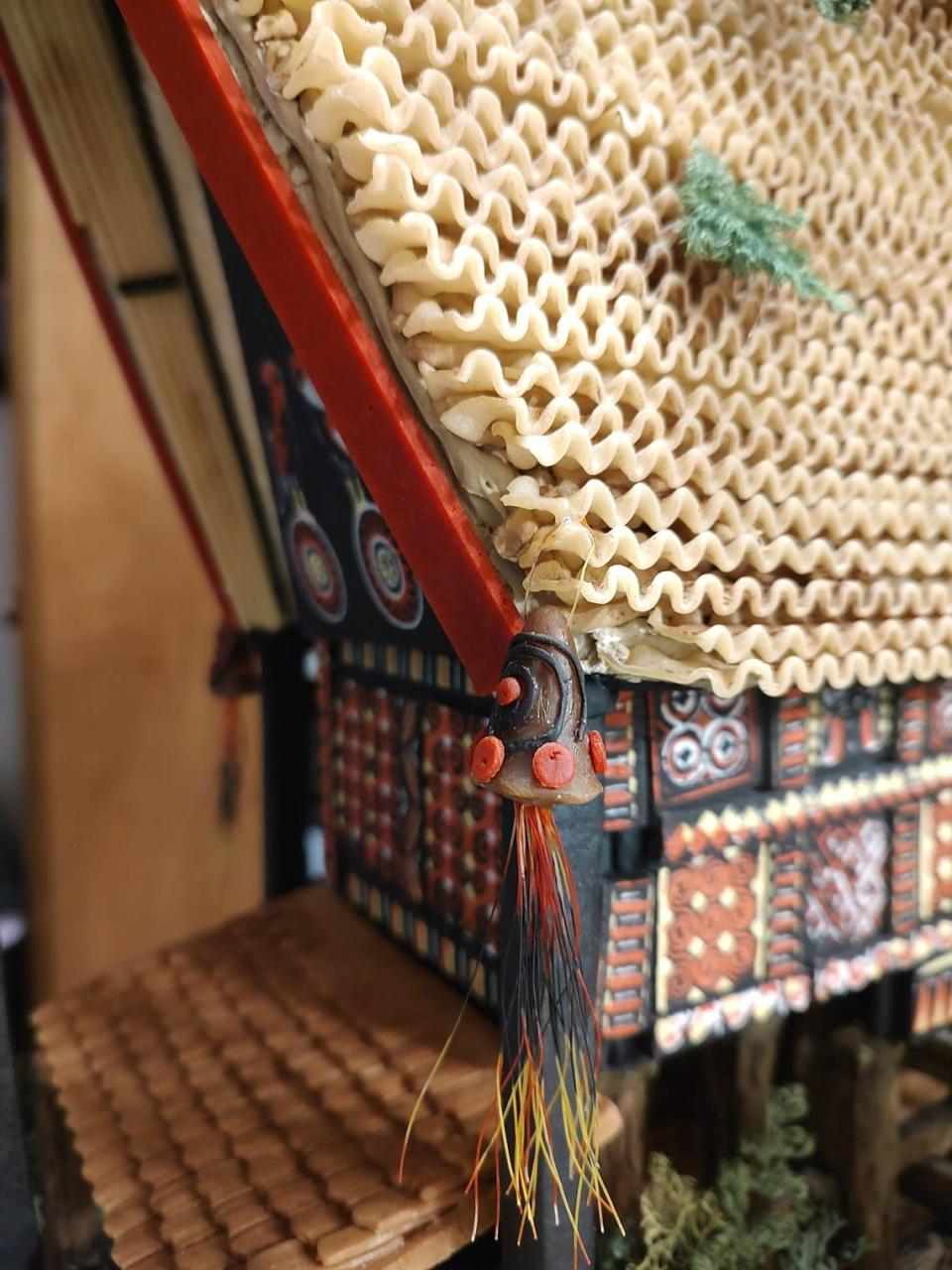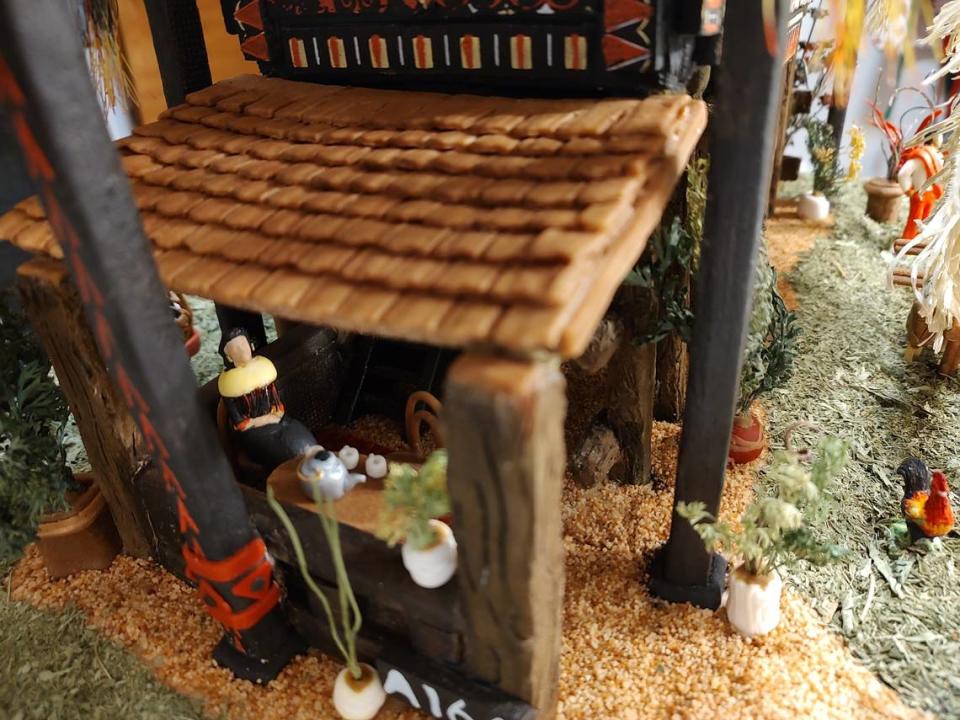NC duo wins nation’s ‘most intensive’ gingerbread house contest. See the winning work
An Indonesian family is posed around their Tongkonan, a traditional and deeply symbolic boat-shaped house.
The family is still in their parade outfits, ones you’d wear for a boisterous funeral. A man is cooking dinner on his outdoor stove, and a woman has prepared coffee. A couple admires the lettoan, a traditional parade float, they made for the occasion.
The family members here are only about two inches tall, sitting beneath hand-painted tile outside their home and among the teeniest coffee cups you’ve ever seen.
They’re made of gum paste, and the Tongkonan is gingerbread.
Fuquay-Varina residents Faith An and her aunt, Deborah Kinton, won this year’s National Gingerbread House Competition at Asheville’s Omni Grove Park with this Indonesian-inspired gingerbread scene, which they called “Christmas at the Tongkonan.” The grand prize comes with $7,500 and a two-night stay at the resort.
The duo calls themselves the “Difficult Dessert Devotees,” and their elaborate, hyper-detailed gingerbread house absolutely earned them their name. The contest is widely considered the biggest and most intensive gingerbread competition in the United States.
This is the second year in a row Wake County residents have won this ultra-competitive gingerbread contest. Ann Bailey of Cary took home the grand prize in 2022. In past years, many Triangle gingerbreaders have taken home top awards in the national competition, helping cement our region as one of the nation’s gingerbread hubs.
The duo’s gingerbread past
An made her first house in 2020 when the Omni Grove Park contest went virtual. She had attended the competition as a spectator for years, she said, and her first year without it showed her just how much she loved the holiday ginger-tradition.
She recruited her aunt, then a Wake County public school librarian with years of experience making elaborate displays, when making a competition-grade house for the first time in 2021.
This year was their third time entering the national competition. Together, they created “Tigger’s Treehouse” in 2021 and “The Inside Out Christmas Party” in 2022, for which they won best use of color.
Just recently, An found a family photo of the both of them making a store-bought gingerbread kit together, estimating the photo was taken 30 years ago.

How long did ‘Christmas at the Tongkonan’ take to create?
An began working on the piece in July, and Kinton stepped in to help in October. They worked together every night since then, they said, often pulling 10 to 12-hour days on weekends.
The piece included pasta — an especially frustrating ingredient to work with, they agreed — for the roof and catgut dental sutures for lantern tassels. Along with their use of stevia leaves, they won “most creative ingredient” in addition to their grand prize.
An emailed the hotel back in February to get permission for the ingredient, as it’s technically “edible” but not something you would eat. It fits in with materials like corn husks and grape stems, An said, which have been used for contest structures in past years.
They considered adding elements to the inside of the house as well before settling on their final design.
“We were going to make windows that opened and closed, because I learned how to do that this year. But time restraints helped us fine tune,” An said.

‘The most humble’
Triangle gingerbreaders gush over the Fuquay-Varina duo, quick to shower them with compliments when they’re not around.
“Faith An is the most humble. One of our other friends who won before told her at the competition that she voted for her house for the ‘People’s Choice’ award, and Faith couldn’t believe that she’d even gotten someone’s vote,” said Jenna Stutsman, a competitive gingerbreader from Cary who competes alongside her mother and her six-year-old son.
“For her to win the entire competition was just outstanding. You couldn’t have asked for a more humble or deserving person to have won.”
What inspired the Fuquay-Varina bakers to create the Tongkonan?
An has never been to Indonesia, nor is her family of Indonesian heritage. She found the “beautiful home” through a late-night internet rabbit hole, she says, and found their celebratory culture fascinating.
Tongkonans are the traditional home to the Torajan people of South Sulawesi.
“Most of Indonesia is Muslim, but there’s a small sect of people who are Christians. What I found so interesting about these people is that they call themselves Christian while still holding onto a lot of their previous traditions, which are very different from things we do in the West,” An said.

Torajans treat death as a long-term process, and lifeless bodies are kept at home and cared for until funerals, which can be months or years after the physical death occurs. Relatives symbolically offer their dead relatives food, water and cigarettes and change their clothes.
A water buffalo sacrifice marks the loved one’s official death. As buffaloes can be expensive to acquire, funerals often don’t happen immediately. Until this spiritual death happens, the dead relatives are considered sick or sleeping.
“I guess that was my connection to these people and this house, as a Christian. I found their cultural traditions, meshed with their personal faith, fascinating. I just wanted to learn more and more,” An said.
You can learn more about the Torajan’s funeral and death rituals by watching anthropologist Kelli Swazey’s TED Talk or in VICE’s “Love Beyond Death” online story.
Cultural details included on ‘Christmas at the Tongkonan’
An and Kinton added many cultural elements to their traditional Tongkonan, including (edible) buffalo horns, pigs, patterned tiles and roosters.
“I really wanted to show respect and honor to their culture, and also to do it in a child-friendly way,” An said, noting media online can be bloody and otherwise graphic.

Kinton created the lettoan (parade float) and most of the teeny tiny elements.
“We made cups for the tea set on the top of a pin. It’s really small stuff, and my eyes and fingers don’t work as well as they used to, so it was a real challenge for me” Kinton said.
“I remember in the days after we finished our house, I took to another craft project and I started working on these really tiny things. And I stopped and said to myself, what am I doing? Practicing already for next year, I guess.”
The 2023 guide to the best Christmas light displays in the Triangle
The 2023 guide to holiday events in the Triangle: Nutcrackers, Christmas shows & markets

